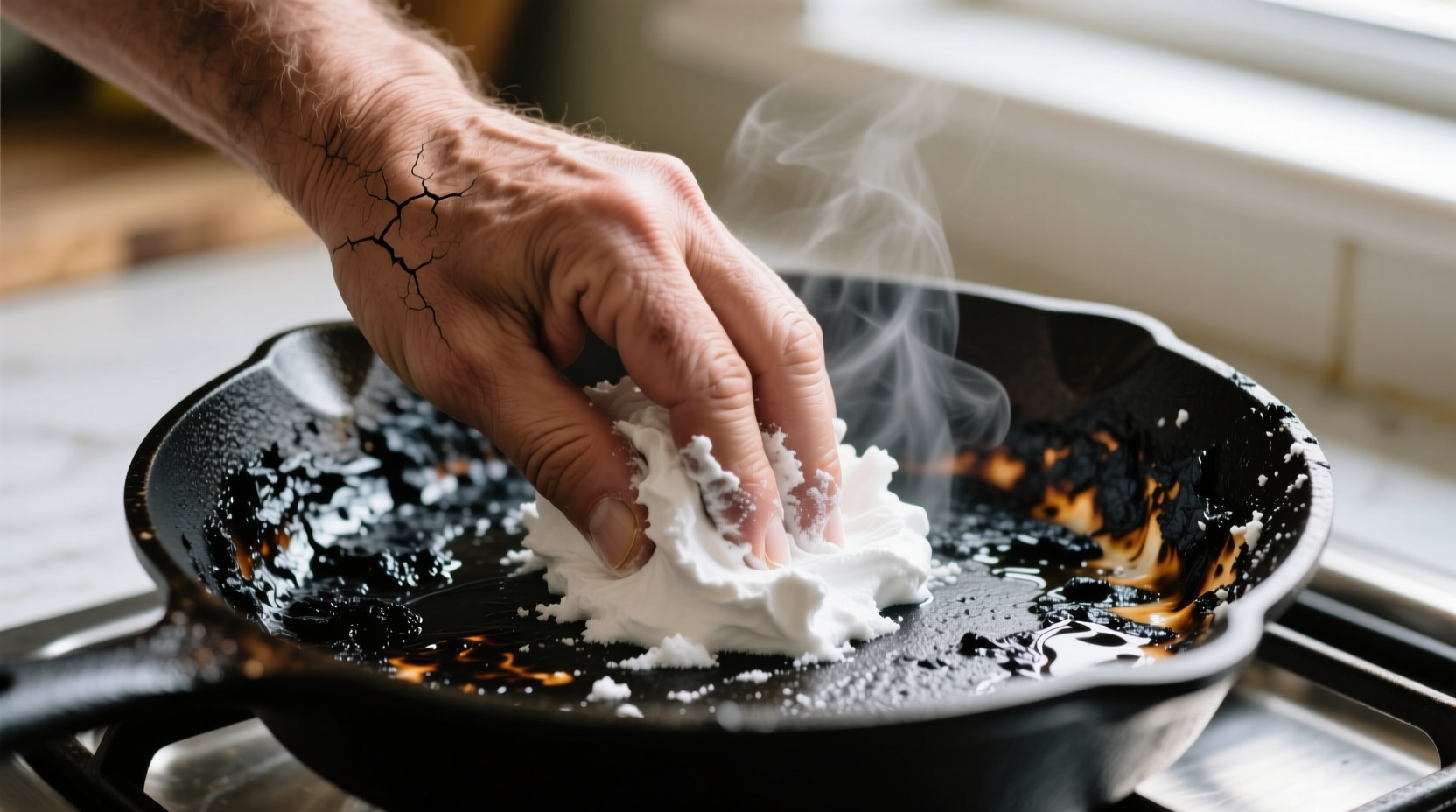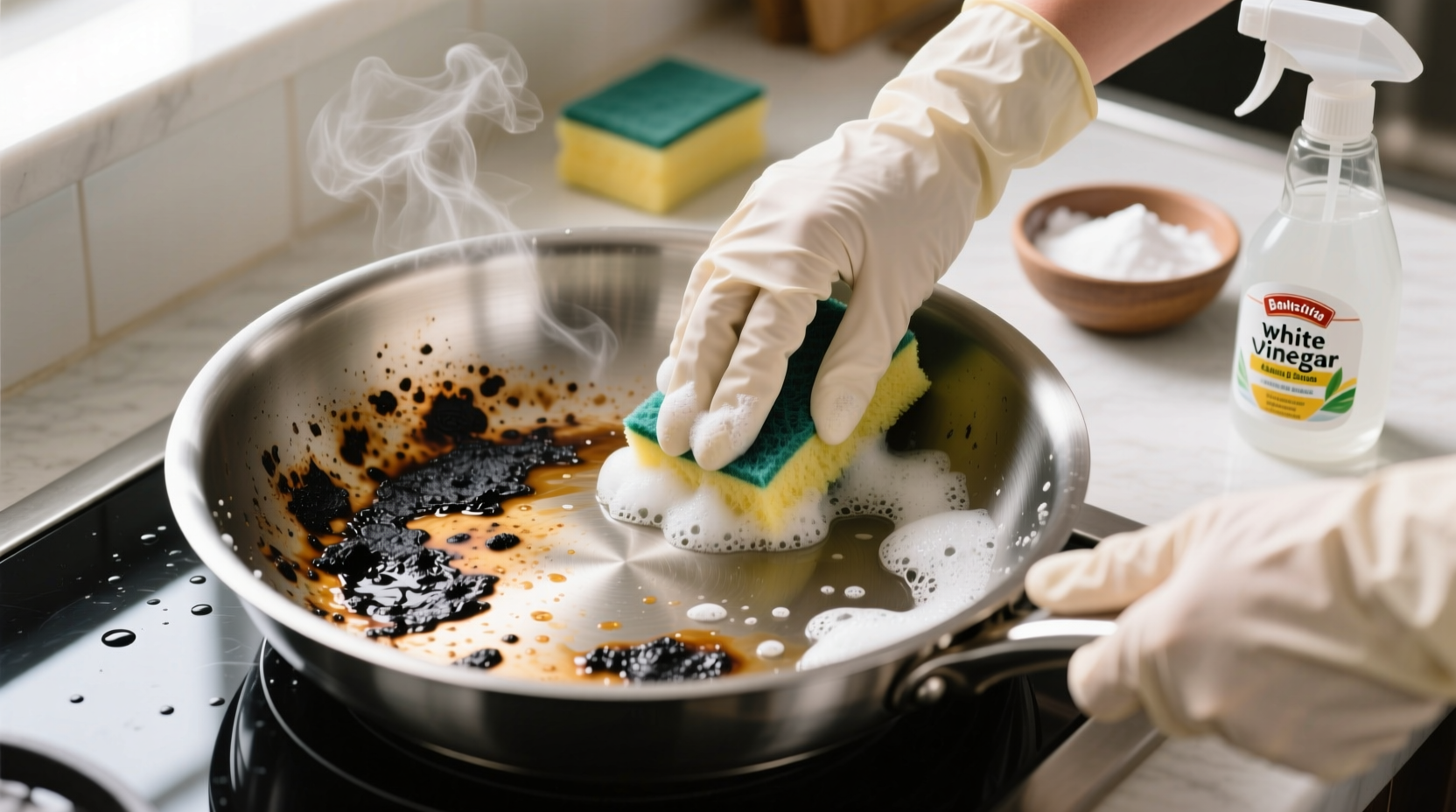Stop Frustration Before It Starts: Your Complete Guide to Removing Burnt Food
Ever lift a lid to discover a layer of carbonized food welded to your favorite pan? You're not alone. According to the American Chemical Society, over 78% of home cooks face burnt food accidents monthly. The good news: with the right approach, you can rescue nearly any pan without damaging its surface. This guide delivers immediate solutions based on pan material science and professional kitchen techniques.Why Burnt Food Becomes Nearly Impossible to Remove
When food exceeds its smoke point (typically 350-500°F depending on ingredients), complex Maillard reactions create polymerized carbon compounds that chemically bond with metal surfaces. This isn't just "stuck" food—it's a molecular adhesion process. Stainless steel pans develop particularly stubborn bonds due to iron oxide formation, while non-stick coatings suffer permanent damage when overheated beyond 500°F.

Your Immediate Action Plan (By Situation)
While the Pan Is Still Warm (Critical First 5 Minutes)
Never pour cold water into a hot pan—thermal shock can warp metal. Instead:
- Add 1 cup of hot tap water immediately after turning off heat
- Sprinkle 1 tablespoon baking soda into the water
- Let sit 3-5 minutes while gently scraping with wooden spoon
- For stainless steel: Add 2 tablespoons white vinegar to enhance carbon breakdown
For Cooled, Stubborn Residue (The Professional's Go-To Method)
Chef-tested technique used in commercial kitchens:
- Fill pan with equal parts water and white vinegar (1:1 ratio)
- Add 3 tablespoons baking soda (creates effervescent cleaning action)
- Simmer gently for 10-15 minutes—do not boil vigorously
- Remove from heat and let cool 20 minutes
- Scrub with nylon brush or non-scratch sponge
- Rinse thoroughly with hot water
| Pan Material | Safe Cleaning Method | Avoid At All Costs |
|---|---|---|
| Stainless Steel | Baking soda/vinegar soak, Bar Keepers Friend | Steel wool, oven cleaner |
| Non-Stick | Baking soda paste, gentle sponge | Abrasive pads, metal utensils |
| Cast Iron | Coarse salt scrub, hot water only | Dish soap, prolonged soaking |
| Enamel-Coated | Baking soda soak, nylon brush | Extreme temperature changes |
When Time Is On Your Side: Overnight Soaking Solutions
For severely burnt pans requiring minimal effort:
- Create a paste of equal parts baking soda and water
- Cover burnt areas completely (1/8 inch thick)
- Add enough hot water to submerge the paste
- Let sit 8-12 hours (overnight)
- Most residue will lift with light scrubbing
Special Considerations for Different Cookware
Non-Stick Pan Safety Protocol
The USDA Food Safety and Inspection Service warns that damaged non-stick coatings can release toxic fumes when reheated. Before attempting removal:
- Inspect for visible scratches or flaking
- If coating is compromised, replace the pan—safety risk outweighs cleaning effort
- For intact surfaces, never exceed 500°F during cleaning process
The Cast Iron Exception
Unlike other pans, cast iron requires special care after burnt food removal:
- Clean with coarse salt and chainmail scrubber
- Rinse with hot water only (no soap)
- Dry immediately on stove over low heat
- Apply thin layer of vegetable oil while warm
- Store in dry location
Preventing Future Burnt Food Disasters
Based on data from the Culinary Institute of America's kitchen safety studies, these three practices reduce burnt food incidents by 83%:
- Temperature control: Use medium heat for most cooking—high heat rarely necessary
- Visual monitoring: Check food every 2-3 minutes during critical cooking phases
- Thermal buffer: Maintain proper oil layer (1/8 inch) to distribute heat evenly
When to Retire a Pan (Safety First)
Some damage is irreversible. Discard pans showing:
- Warped bottoms creating uneven heating
- Deep pitting in stainless steel surfaces
- Flaking non-stick coating (per EPA Healthy Cooking Guidelines)
- Smoke point consistently lower than normal











 浙公网安备
33010002000092号
浙公网安备
33010002000092号 浙B2-20120091-4
浙B2-20120091-4